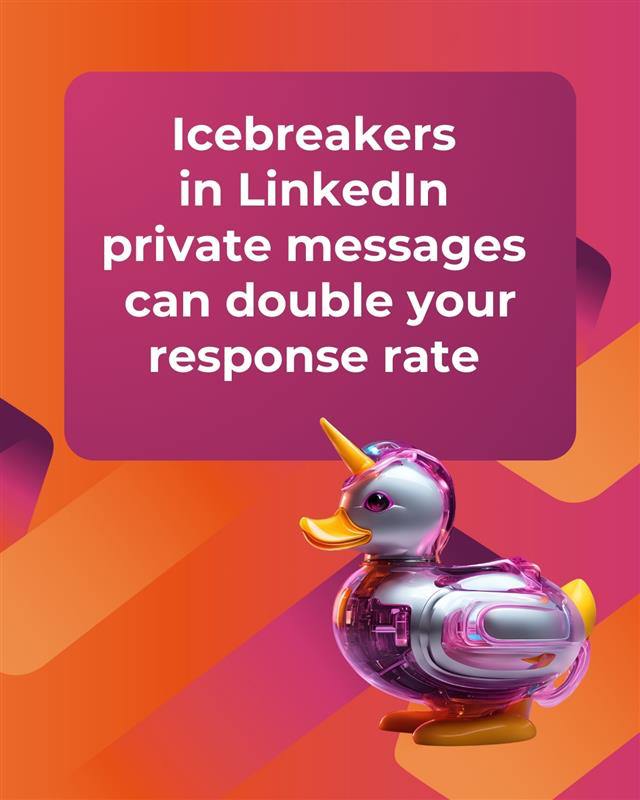Private messages are one of the most effective tools on LinkedIn. This is where real connections are made — whether it's scheduling calls, meetings, or discussing next steps.
For businesses looking to attract B2B clients or partners, using private messages is essential. Even when lead generation isn’t the primary goal, private messages remain a crucial element of personal branding. Effective networking on social media plays a fundamental role in building a strong personal brand.
The most effective messages often begin with an icebreaker. A well-chosen icebreaker sets a friendly tone and helps you stand out from the crowd of other messages.
➡️ Types of icebreakers:
- Humor or irony – A light joke related to a shared experience or relevant topic.
- Personalization – Mention unique interests or achievements of the person, but avoid the obvious ones (like their headline). Show you’ve done your homework.
- Shared background – Did you study at the same university? Attend the same conference? Or come from the same city? Mention it.
- Congratulations – Acknowledge a recent success or milestone.
- Local context – Use a local greeting or refer to cultural specifics. Just make sure it feels natural and consult with local experts if needed.
What icebreakers have you found effective?
➡️ How to use icebreakers:
- Relevance – Tailor your tone to your audience. Some markets prefer a more formal approach, while humor can work in others.
- Clarity – Keep your icebreaker simple and to the point.
The key to success is testing. Try different messages, track your results, and refine your approach. Best of luck experimenting!
For businesses looking to attract B2B clients or partners, using private messages is essential. Even when lead generation isn’t the primary goal, private messages remain a crucial element of personal branding. Effective networking on social media plays a fundamental role in building a strong personal brand.
The most effective messages often begin with an icebreaker. A well-chosen icebreaker sets a friendly tone and helps you stand out from the crowd of other messages.
➡️ Types of icebreakers:
- Humor or irony – A light joke related to a shared experience or relevant topic.
- Personalization – Mention unique interests or achievements of the person, but avoid the obvious ones (like their headline). Show you’ve done your homework.
- Shared background – Did you study at the same university? Attend the same conference? Or come from the same city? Mention it.
- Congratulations – Acknowledge a recent success or milestone.
- Local context – Use a local greeting or refer to cultural specifics. Just make sure it feels natural and consult with local experts if needed.
What icebreakers have you found effective?
➡️ How to use icebreakers:
- Relevance – Tailor your tone to your audience. Some markets prefer a more formal approach, while humor can work in others.
- Clarity – Keep your icebreaker simple and to the point.
The key to success is testing. Try different messages, track your results, and refine your approach. Best of luck experimenting!
